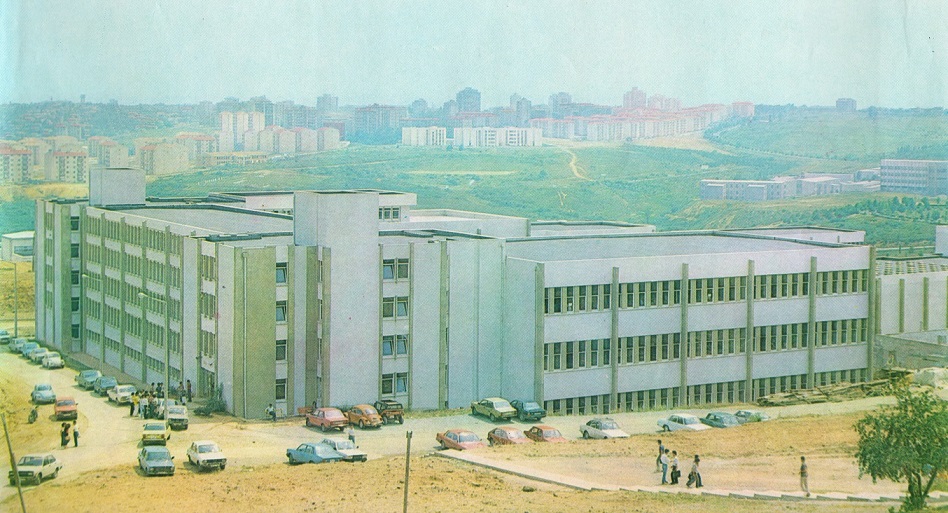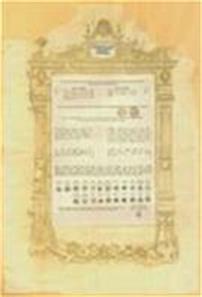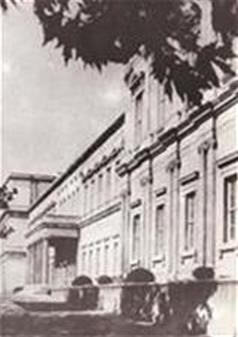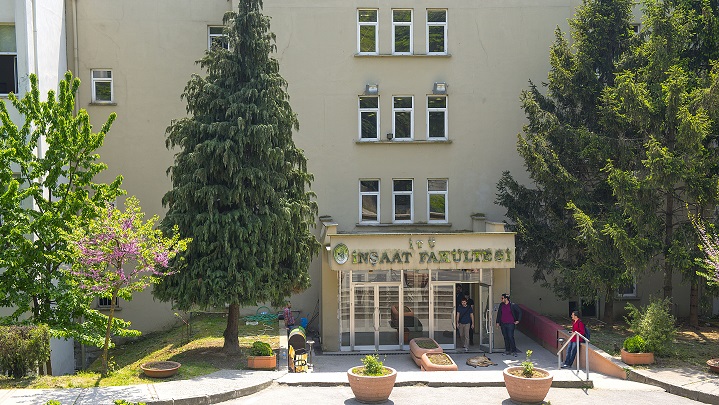It can be accepted that the history of ITU Civil Engineering Faculty was commenced in 1727 by the establishment of Humbarahane during the era of Damat İbrahim Paşa. However, this attempt was to no avail due to the martyrization of the studwents of this school by the Janissaries.
In 1734, during the grand viziership of Topal Osman Paşa, classes related to Civil Engineering was being taught in Hendesehane, which was founded in Üsküdar. Similarly, this school was also closed after three years due to the opposition of the Janissaries. The reasons of the tragedy that occured in Battle of Chesma, 1770 were inadequacy of the ships and the ignorance of the Ottoman Navy.
Although the Atlantic Map (1513) and the Map of Europe and the Mediterranean Sea (1523) by Piri Reis were the leading pieces of the era, Ottoman viziers were so ignorant that they claimed it was impossible for the Russian Baltic Fleet to reach the Mediterranean Sea assuming that there were no sea connection. With the proposal from Gazi Hasan Paşa and Baron de Tott, Mühendishane-i Bahri-i Humayun was established during the time of Sultan Mustafa III, aiming to train naval construction engineers. Since Ottoman Empire did not have any engineering schools at the time, military engineering classes were taught by French engineers beginning from 1784. French lecturers had to return to their country in 1788 with the increasing suppression from Austria and Russia, which were unwilling for the development and thriving of Ottoman Empire. In 1759, during the Grand Viziership of Koca Ragıp Paşa, Humbarahane was reopened in Karaağaç, Haliç (Golden Horn) and continued to teach even though it was incompetent. In 1792, Lağımcı Ocağı and Humbaracı Ocağı (Guild of Sappers) were established.
The teaching of civil engineering and related engineering branches began in 1795 after the establishment of Mühendishane-i Berri-i Hümayun, as set forth by the code of laws by Selim III. These two schools continued education until 1808.
Some of the articles of the establishment legislation, known as the 1210/1795 act of Chamber of Imperial Ground Engineers (Mühendishane-i Berri-i Humayun), put forth some more far-sight than the current University legislations. The chamber comprised 4 classes. First year students had designated as the 4th class so the last year as the 1st class. Initially, lectures in the field of essential civil engineering sciences were given namely: writing, plan reading, Arabic, geometry, arithmetic, French, calculus, geography, planar trigonometry, algebra, surveying, war history, conic sections, differential and integral calculus, mechanics, astronomy, ballistics, fortress and training theories. In 1797, a series of books on civil engineering, entitled “New Methods”, have been published in the chamber’s own press. The very first time in the chamber taught the lectures in physics, chemistry, trigonometry, topography, strength of materials, optics, botanic, geology, mineralogy, sectant and octant. In 1847, chamber transformed into the Artillery and Fortification School of Engineering.

In 1883, Abdulhamit II handed the administration of the School of Civil Services (Hendese-i Mülkiye), the unmilitary engineering school founded by him, over the military administration with an aim to raise the Turkish elements and staff. It was a leading school of its era. Initially planned as a combination of 3 years of high-school and 4 years of engineering calendar, but started as a 5 years of engineering school since the first graduates had an education period between 1883 and 1888. In 1887, engineering education period was raised to 7 years. Initially, the school had been established on German education bases. Its graduates worked in construction projects of several roads and bridges. They also worked with great sacrifice in the railroad construction project, known as Hicaz Railroad between Damascus and Mecca, initiated by Abdulhamit II and completed the 1200 km section of it, reaching out to Medina, in 8 years.

Hendese-i Mülkiyye Mektebi Şahanesinde İkmali Tahsil Edenlere Mahsus Mühendislik Şahadetnamesidir.
Mumaleyh
Abdi Nadir Efendi, din ve devletine ve velinimet biminnetimiz Padişahımız Essultan El Gazi
ABDULHAMİD HAN-I Sani Efendimiz Hazretlerine sadakatle hizmet edeceğine yemin etmiştir.
6 Ramazan sene 317
In 1909, the school tied up to Ministry of Public Works (Nafia Vekaleti) with a new name, College of Engineering (Mühendis Mekteb-i Alisi). With its new structure, the graduation period is dropped from 7 years to 6. Between the years 1909-1922 went down in the nation’s history as an unfortunate period due to the three major wars, Balkan war, The Great war and the Independence war of the nation. Part of the students fought in war fronts and time to time returned to their school. In this period, some valued science people joined the teaching staff, like, famous professor Philipp Forchheimer in 1916 and the world-famous professor Karl Von Terzaghi who established the Geotechnical engineering department. Between the years 1909-1923, 202 certified civil engineers graduated from the College of Engineering. The number increased to 432 graduates until the proclamation of the Turkish Republic. In 1928, the school continued with a new name, Master of Engineering College (Yüksek Mühendis Mektebi).
With the new regulations, activated in 1929, the school gained a new structure with resemblance to German technical schools, have been added three branches of expertise, such that, Road and Railway engineering, Architecture department, and Construction and Water engineering. As can be seen, the Master of Engineering College had been operated mostly in Civil Engineering education since its inception. In 1934, the Electromagnetics division, separated from the Darülfünun, has been opened, which laid the foundations of the Mechanical and Electrical Engineering Faculty.

| |
Following are some quick facts continuing in the history the school.
In 1935, added the division of Battle.
In 1943, Mechanical and Electrical engineering faculty is divided into two distinct faculties.
In 1941, the school had a new name, Certified Engineering School (Yüksek Mühendis Okulu).
In 1944, divided into 4 faculties as, Civil Engineering, Architecture, Mechanical and Electrical engineering, and gained its last name of Istanbul Technical University. Back then, Technical University had 5 years of graduation period while its graduates was receiving a certified engineer title.
In 1957, a 4 year Civil Engineering Faculty have been established in Maçka with its graduates receiving only the Bachelor Civil Engineer title.
In 1973, put into practice a double stage education model, a 4 year Bachelor education and a 1.5 year Masters education. |
While the number of civil engineering graduates yielded until the proclamation of the Turkish Republic, between 1988-1923, was 432, the total number, including both bachelor and master graduates, raised to over 65000 between 1924 and 1994. It would be more accurate to fix the stating date of Civil engineering education as 1795, the year the Mühendishane-i Berri-i Hümayun had been established, despite the fact that some people considers 1784. Today’s modern unmilitary engineering education started with the establishment of the Hendese-i Mülkiye in 1883. Civil engineering education first started in Gümüşsuyu building and continued in Taşkışla building. In 1982, the faculty completely relocated to Ayazağa Campus. Currently, the faculty constitutes of three divisions, as Civil Engineering, Geomatics Engineering and Environmental Engineering.

Civil Engineering Department consists of 7 divisions: Structure, Building Materials, Construction Management, Mechanics, Hydraulics, Geotechnics and Transportation. The department has approximately 1400 students. Starting from 1969-1970 academic year, Geomatics Engineering Department has been accepting student admissions. The department has been working on topics such as Geodesy, Measurement Technique, Cartography, Photogrammetry, Remote Sensing, Global Positioning System (GPS), Global Navigation Satellite Systems (GNSS), Laser and LIDAR. Geomatics Engineering Division has approximately 500 students. Environmental Engineering Department is engaged in the analysis, evaluation and design related to environmental problems and their requirements, as well as the implementation, operation and management of environmental systems. The department contributes to science and technology on national and international levels with scientific and applied research and has approximately 450 students.
All three departments of ITU Civil Engineering Faculty have been accredited by ABET (Accreditation Board for Engineering and Technology), first in 2004 and then in 2010.
As of today, the Civil Engineering Faculty has 2688 students including those attending the English prep school. The faculty has 187 academics (professors, associate professors and assistant professors), 9 lecturers and 110 research assistants. Each year, 550 students are admitted to the faculty. 5 parallel classes are taught in Civil Engineering Department while the other departments have 2 parallel classes. This provides a more efficient education environment for the students with less crowded classrooms.

